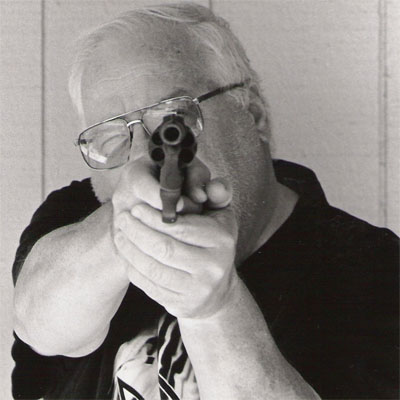For more than 2 decades, I've been an ice sculptor, mostly for events in and around New Orleans. This means that if it can be made of ice and it's fun, I've probably made it for some crazy all-out party. I am a gold medal ice carver and my teammates and I also have a Guinness World Record for the world's longest ice bar. In 2004, I was ohh, so close to winning a world championship in Alaska. Alas, we came in second...maybe next time. But want to know something about ice sculptures? Ask me!
There are a few different organizations that have set up specific guidelines for ice carving competitions. For example, Ice Alaska, which runs the World Ice Art Championships in Fairbanks, has guidelines governing final judging of the sculptures as well as how carvers are allowed to go about creating their sculptures. Regarding the judging portion, without going into too much detail, the guidelines offer advice to the event judges and break down judging into a series of categories that the judges can use to rate a sculpture's quality. These categories cover both the technical and the creative aspects of a sculpture and the judges are instructed to consider only the sculpture, not the sculptor(s). As for what carvers are allowed to do while carving, it can depend on the competition, and also on the sanctioning organization. (Many events have no sanctioning organization.) But there are some basic rules that are common to almost all events. 1) sculptors have to create their piece within a particular time limit 2) they can only have limited outside help (such as lifting a very heavy piece of ice) 3) they can't use computer controlled tools like CNC machines to make the sculpture 4) the sculpture must be all ice and only from the ice that they were initially provided for the competition (that means no support structures) 5) particularly racy sculptures are usually frowned upon because a lot of kids show up at carving competitions 6) carvers can't interfere with other carvers unless it's a safety thing Most other rules resemble common sense and I'm sure that I've forgotten an obvious one or two. But the gist of it is: ice sculptor(s) + a lot of ice + a lot of sharp hand and power tools + a surprisingly short time limit = anything from an amazing work of art that will soon melt away, to a pile of ice chunks that used to be a sculpture until somebody miscalculated. I hope that answers your question. If not, feel free to ask another; thanks!
Ice sculptures in many cases involve a lot of artistry so there can be wide variations in the price of a particular sculpture depending partly on the skill of the ice sculptor. Other factors that affect the price include items frozen in the ice and complex white snowfill or color graphics or designs. But to give a guesstimate, I'd say that for a single block sculpture (from a single 300 pound block of carving ice) you might see a range of $350-$800.
Well, if using an ice sculpture to propose counts as wooing, then yes. It was an angel holding the ring frozen in and yeah, it worked ;)
Yes, your first four questions combine to be a great example of the typical barrage of questions that an ice sculptor gets at sculpture set up time. And I'm sure that was your intent and that you already know the answers. But for those who don't:
you don't (The sculpture is usually brought to set up in some sort of insulation though; before that it's usually in a freezer.)that one depends on the sculpture, but the range is usually between 10 minutes and 10 hours (average: 1-2 hours)a long time, over 20 yearsat least 15 to 20 minutes...
Actually, #4 is a for fun answer that I use to get a reaction. At the time the question is usually asked, it's about 30 minutes until the party starts. Therefore, it would be melted before anyone saw it if this was true. Their eyes always widen in surprise and you start to hear them say "What!?" But the real answer is usually about 4-6 hours, long enough for all but the longest parties.
5. Unfortunately, mini-me melted. He was a mini-snowman made from the paltry amount of snow that fell in New Orleans on Christmas the year before Katrina. But he'll be back some day...
6. I am working on my giant freeze-ray gun. If I can't get that to work, then it's simply a waiting game before the whole universe is MINE! That's because one theory has it eventually just becoming cold, desolate emptiness. Such a happy thought! (I'll also need some hard-core cryogenics for that though.)
Correctional Officer
 Were there a lot of suicides in your prison, and what's the most common way prisoners do it?
Were there a lot of suicides in your prison, and what's the most common way prisoners do it?
Tattoo Artist
 Is it illegal to tattoo a client if he's drunk?
Is it illegal to tattoo a client if he's drunk?
Movie Theater Employee
 Why is movie theater food so overpriced?
Why is movie theater food so overpriced?
It's funny you ask your question that way. I just recently updated one of the sculptor galleries on my ice carving info site (update: that site is now gone, but I'm working on a new one) and I compared him to MJ in the intro text. His name is Mark Daukas and he was just about unbeatable at ice carving competitions in the 90s. I had previously compared him to Lance Armstrong, but well, you know.
However, Daukas doesn't compete anymore and today, the most Jordanesque ice sculptor is probably Junichi Nakamura. Over the last 7 years, he's won 10 out of 14 World Ice Art titles that he went after. (You can win 2x each year; 2 different types of competitions and both are team competitions). A lot of Junichi's success comes from his willingness to take risks that other sculptors can't stomach. In the last 10 years, at least 3 of his huge multi-block sculptures at the ice art championships have collapsed prior to judging (check out this video: ice sculpture fail) and another collapsed well after judging when somebody tried to use a leaf blower to clear snow off of it.
Incidentally, Junichi and Mark Daukas have competed against one another at least once, at the 1992 Olympic Arts competition in Hamar, Norway. Junichi and his teammate came out on top, although in kind of a weird way.
I like to carve at about 17 degrees F (in a big freezer), but I've carved in a range of temperatures, all the way from about -25 degrees F (Alaska) to about 95 degrees F (Gulf Coast in June).
Ironically, Junichi, the ice sculptor in the video, has perhaps gotten more exposure from a sculpture collapse than he has from all his other amazing sculptures that stayed up. The video highlights just how dangerous and unpredictable large scale ice sculptures can be. I haven't asked him about this, but I'm pretty sure Junichi has a "need" to push his sculptures to the edge, so that you wonder how they stay up. I know that the first time I saw him carving one of his pieces in Canada, I was pretty sure it would collapse before he was done. (It didn't.) I find that "crashes" seem to come in bunches. When my sculptures would fall during competitions, I would have a series of crashes over a short period, then they would go away for a while. It's definitely disappointing, but it's part of carving and it helps you learn. I liken it to snow skiing where if you don't wreck once in a while, you're not skiing hard enough. The last time I was at the Ice Art Championships, I got to see Junichi and his team finishing up his birdcage sculpture. He's learned how to set the stage; the scene was very reminiscent of that in the video. And now, everybody knows to have their video cameras running. He hasn't crashed in Alaska lately and he didn't crash the birdcage piece. However, I doubt he's done with crashing large sculptures. I carved on his team in 2004. (We didn't crash.) The video you saw was from 2005. In 2003, he had another big crash and this one was probably even more amazing than the one on the video because the sculpture was taller. Too bad nobody had a camera...
-OR-
 Login with Facebook
Login with Facebook (max 20 characters - letters, numbers, and underscores only. Note that your username is private, and you have the option to choose an alias when asking questions or hosting a Q&A.)
(A valid e-mail address is required. Your e-mail will not be shared with anyone.)
(min 5 characters)
By checking this box, you acknowledge that you have read and agree to Jobstr.com’s Terms and Privacy Policy.
-OR-
 Register with Facebook
Register with Facebook(Don't worry: you'll be able to choose an alias when asking questions or hosting a Q&A.)